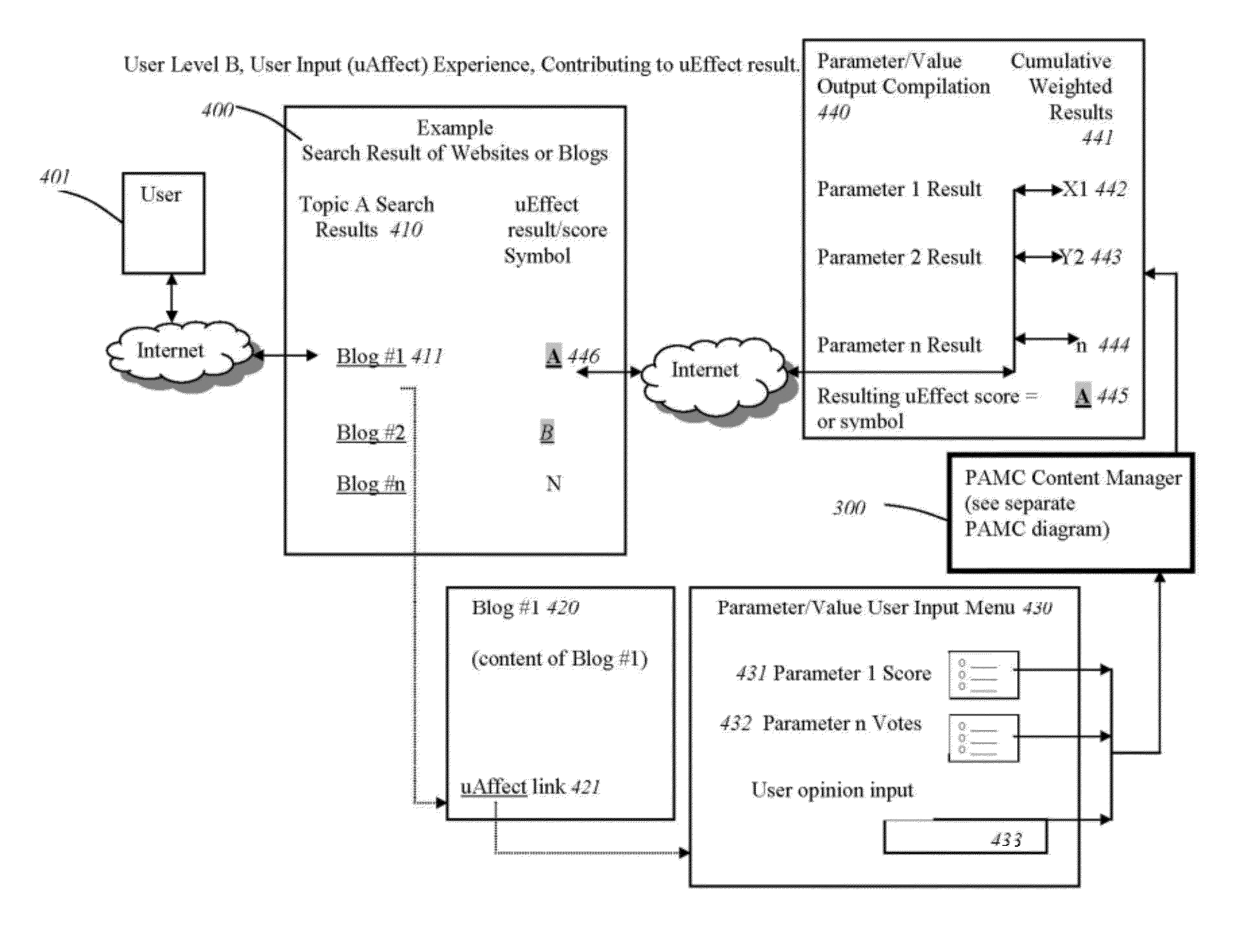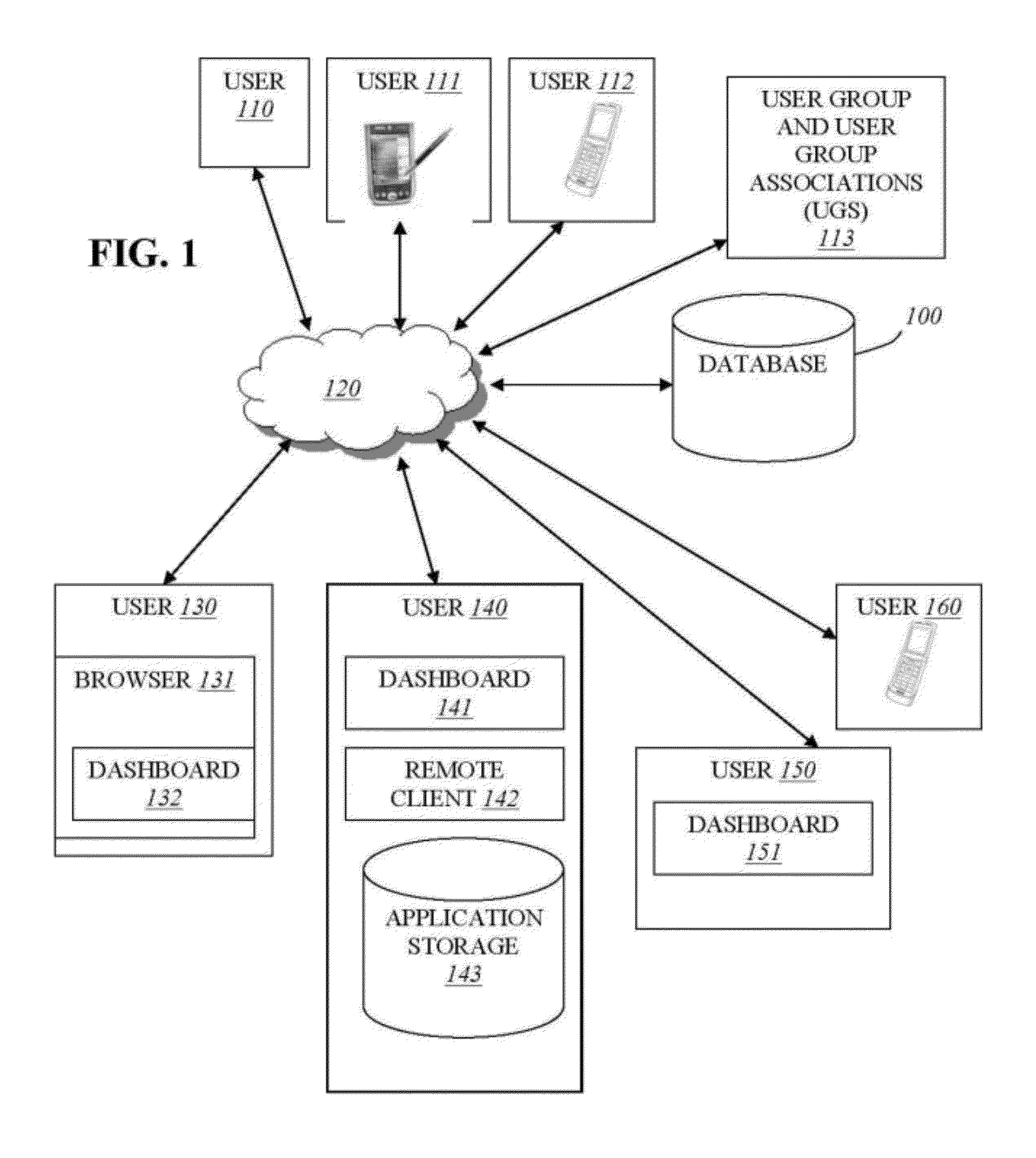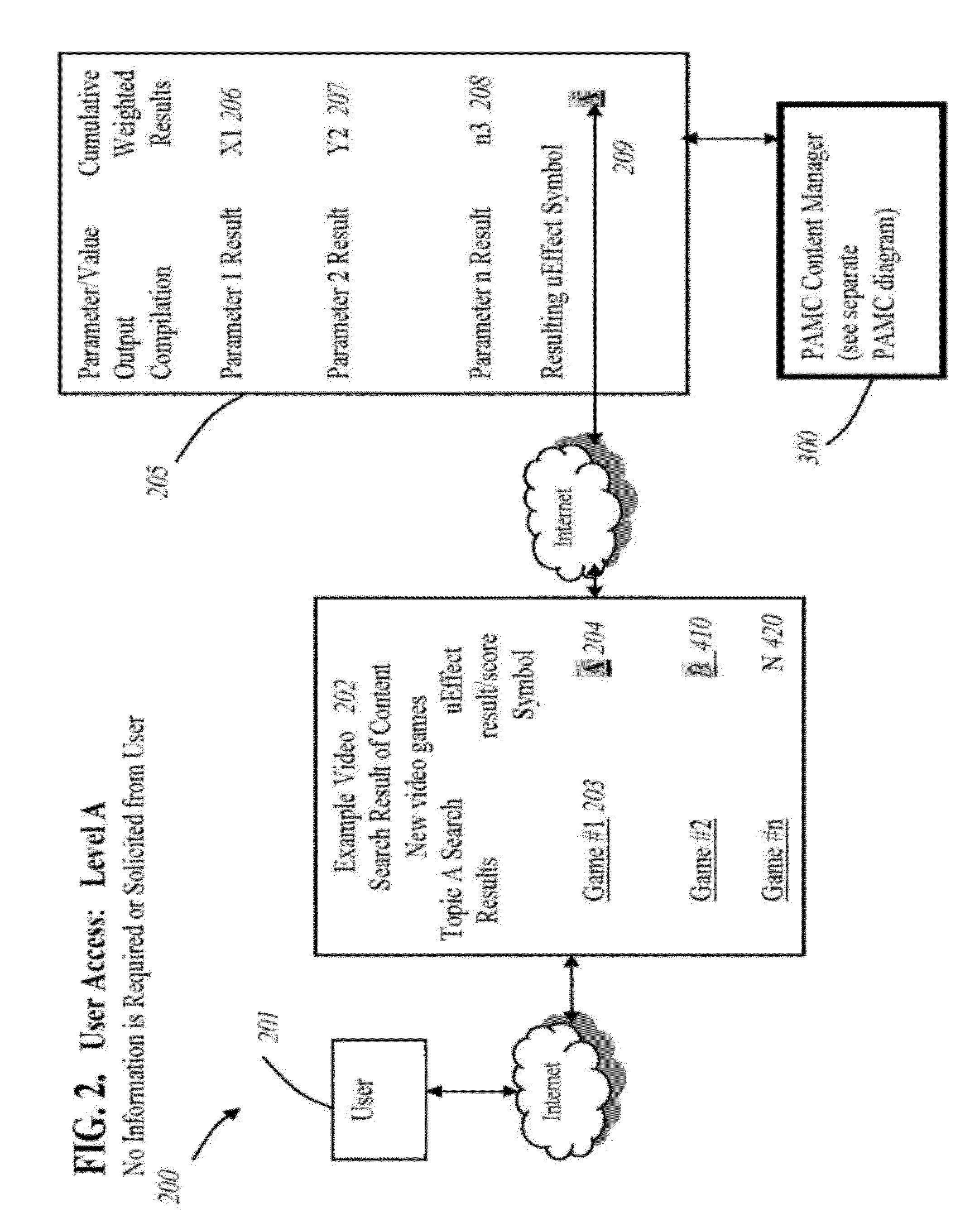[0020]In some embodiments, the present invention provides a computerized method and apparatus for searching, analyzing, and presenting data, and more particularly to personalizing meaningful and relevant data using a user-defined, user-weighted, and a user-profile-driven method to obtain relevant data and feedback tuning for searching, comparing, and analyzing historical, current, and predicting future
momentum data. Some embodiments further include enabling user-centric meaningful and
relevant information in the form of input data or feedback. Some embodiments enable and facilitate sharing of data and
user defined and user weighted feedback and decisions with regards to
purchasing, evaluating, comparing, predicting, searching and browsing a particular product, service, individual event or other user-defined topic. Some embodiments define the methods of eliciting, collecting, organizing,
processing, weighting and retrieving meaningful and relevant content provided by the input of individual weighted and group weighted parameters for the benefit of subsequent users and groups of users as a shared
community.
[0022]This invention provides a
system and method that enables the user to search and identify meaningful and relevant information, based upon the weighted, custom parameters provided by the user and parameters or rules defined by the community of users as a group, with the option of utilizing
user profile information to tune or detune searching, comparing or contrasting, and predicting.
User profile information is collected and organized with data and feedback collected from other users. The results are then tailored to a weighted, cumulative summary result, for display that benefits the contributing user and subsequent future
community or user group associations (UGAs). The methods provide a summary, or result, that can be tailored specifically to the user based upon weighted rules (algorithms) and parameters defined by the user (or a user group as a whole), and the weighted rules and parameters defined as meaningful by the user (group). The resulting cumulative and weighted results provide more meaningful and relevant data.
User input data and summary results are displayed, in some embodiments, in a dynamic, linked, multivariate symbol, graph or figure for ready access via computer or
mobile device.
[0025]Key components to effective information and
data search, analysis and retrieval lies in enabling the individual users, in conjunction with the user groups, to configure the user centric,
user defined and user weighted parameters, rules (algorithms), factors, ‘use’ of data context, tools and mechanisms. This unique approach optimizes searching, comparing or contrasting, analyzing, and predicting trends, markets, behaviors and other information gathered from a
user defined criteria of organizing the data. One of the unique aspects of this invention is that it allows the users to determine the parameters or factors that are important to them as individuals, and define the parameters and factors important to the user
community or group as a whole, and then weight the relevance of all factors and parameters to be considered in the feedback, scores or other data. Searching, comparing or analyzing data within a
dashboard application provides the user with the ability to define and prioritize the topics and parameters important to the search query. Cumulative results provide meaningful and relevant feedback and are displayed in a weighted, cumulative result in a meaningful summary of the
data set or symbol with multiple variables indicated within the displayed symbol. The symbols, in some embodiments, are dynamically linked to display, elicit, and receive information.
[0027]In maintaining a
centralized database, the
system has the ability of harnessing user-centric data to organize and manage the input information collected by the users (in some embodiments to include the individual
user profile information, implicit, explicit, implied data to include
user feedback on various topics and
user input including ratings or scores and other information, on each of the group or community parameters that reference each topic). Data is available in the present invention as an integrated
data input and feedback interface. This apparatus allows for several operations to be performed, including enhanced meaningful
data search and retrieval, enhanced meaningful results,
data analysis and data
predictability outputs and summaries. Manipulated
data search results, according to user and UGA definitions, are stored for additional analysis by a
ranking system. Outputs are displayed and made available to the users in a predefined format or symbol defined by the user, or the UGA as a whole.
[0028]The method herein in one embodiment includes a
dashboard for the functions of searching, comparing, collecting and analyzing data. The
dashboard (see FIG. 7 and PDA figure) are fully integrated, real-time
user interface(s) with edit functions that can utilize several tools, defined and weighted by the user, to manipulate and optimize the functions described above and other customized functions defined by the user or the user group. The dashboard or other input apparatus enables the user to easily switch from a standard
search function to the user defined and weighted
search function. The apparatus has the ability to display multivariate results that can graphically represent several variables, factors, scores, rankings and parameters. The results can be displayed by the display and notification preferences defined by the searching user or the parameters recommended by a collective user group,
community or association.
[0029]Analyzing trends or tuning of the
heuristics and algorithms, includes evaluating the topics and weighted parameters defined by the user and communities, combined with user profile information and the feedback and scoring data gathered over time. The system benefits users by providing powerful trending and prediction analysis when economic models and statistical tools are employed for modeling tools and techniques including
momentum analysis. To enhance the relevancy of search or
data analysis, a user can search parameters and profiles from the perspective of a UGA that the searcher may or may not directly belong to.
 Login to View More
Login to View More  Login to View More
Login to View More 


